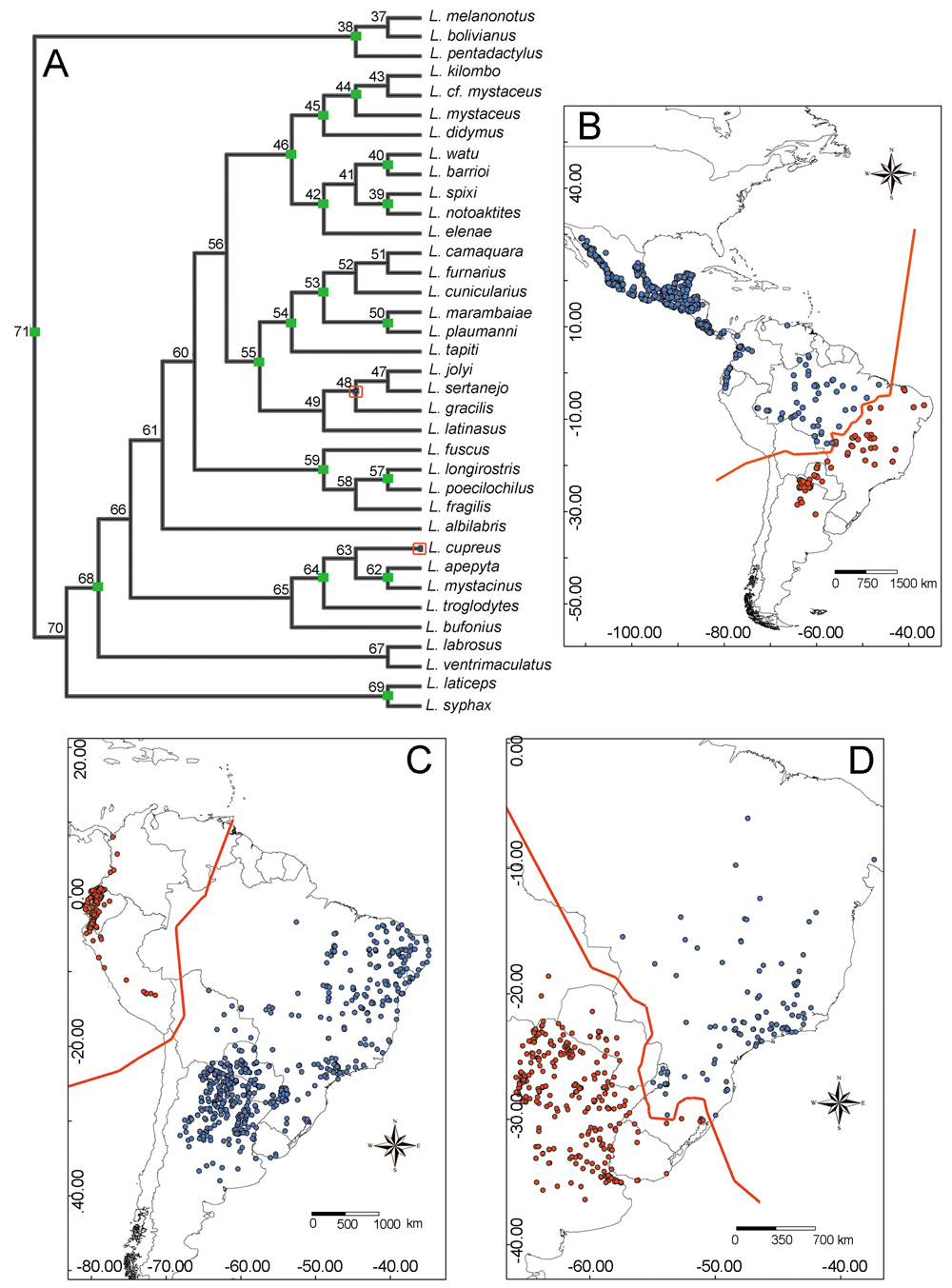Historical Biogeography of the Frogs of the
Leptodactylus fuscus Group
This is the first contribution to the historical
biogeography of the Leptodactylus
fuscus group based on quantitative methodology, a complete
sample of species identified to date, and available phylogeny. In this
study we focused on significant vicariant events that occurred at basal
nodes, and some necessary movements that should have occurred in the
group. The results suggest that the ancestor of the group occupied
large areas within the Amazon and Chacoan subregions. Due to several
dispersal events, the ancestor distribution range may have expanded to
the Caribbean subregion. This expansion could have occurred during
wetter periods, when forests were more extensive, which would have
allowed the invasion of open habitats within humid forest systems.
Furthermore, ecological factors and marine transgressions that occurred
during the Miocene could have had a great influence on the current
distribution of the group.




Spatial analysis of vicariance. A: Tree of the Leptodactylus
fuscus group showing a consensus reconstruction of historical
biogeography by vicariance inference. Green squares show disjunction;
red empty squares show the nodes ignored by the program. B–D:
Hypothetical barrier at vicariant node 71 (B), 68 (C) and 55 (D); red
and blue dots show disjunct sister clades.
Read the full article, published by Zoological
Studies, here
Follow Zoological Studies on
Twitter @ZooStudies
and Facebook
